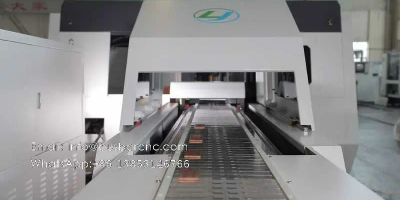Water treatment plays a crucial role in supplying clean and safe water for various purposes, including drinking, industrial processes, and agricultural use. One of the essential components of water treatment systems is pump technology. Pumps are vital for transporting water through different stages of the treatment process, ensuring efficiency and reliability. In this article, we will explore the significance of pump technology in water treatment and its impact on the overall effectiveness of water purification processes.

The Role of Pumps in Water Treatment
Pumps are integral to the entire water treatment process, from raw water intake to the delivery of treated water to end-users. They are used for a variety of purposes, including lifting water from its source, transferring water between treatment stages, and distributing treated water to consumers. Without efficient pump technology, the purification and distribution of clean water would be severely hindered.
Raw Water Intake
In the initial stage of water treatment, pumps are employed to extract raw water from its source, such as lakes, rivers, or underground wells. These pumps must be capable of handling varying flow rates and water levels to ensure a continuous and reliable water supply. Depending on the source and quality of the raw water, specialized pumps may be required to handle sediment, debris, or other contaminants present in the water.
Pumping to Treatment Units
Once the raw water is extracted, it needs to be transported to the treatment facilities for purification. Pumps play a critical role in conveying the water to different treatment units, such as sedimentation tanks, filtration systems, and chemical dosing stations. These pumps are designed to handle the specific requirements of each treatment stage, including the transfer of water with varying levels of turbidity and the addition of treatment chemicals.

Pressure Boosting and Distribution
After the water has undergone the necessary purification processes, pumps are responsible for boosting the water pressure to facilitate its distribution to consumers. This often involves pumping the treated water into storage reservoirs or water towers, where it is held under pressure before being distributed through pipelines to homes, businesses, and industrial facilities. The efficiency and reliability of these distribution pumps directly impact the consistent supply of clean water to end-users.
Types of Pumps Used in Water Treatment
Various types of pumps are utilized in water treatment systems, each suited to specific applications based on flow rates, head requirements, and the characteristics of the water being handled. Some common types of pumps used in water treatment include centrifugal pumps, positive displacement pumps, submersible pumps, and vertical turbine pumps. Each type offers unique advantages and is selected based on the demands of the particular stage of the water treatment process.
Centrifugal Pumps
Centrifugal pumps are widely used in water treatment due to their ability to handle large flow rates and low to moderate head conditions. These pumps work by converting the rotational energy from an impeller into kinetic energy, propelling the water through the pump and into the treatment system. Centrifugal pumps are effective for raw water intake, transferring water between treatment stages, and boosting pressure for distribution.
Positive Displacement Pumps
Positive displacement pumps are favored for their ability to deliver a consistent flow of water regardless of the system’s pressure conditions. These pumps operate by trapping a fixed amount of water and then displacing it into the treatment process. This makes them suitable for applications where precise control of flow rates and pressures is required, such as chemical dosing and metering processes within water treatment plants.
Submersible Pumps
Submersible pumps are designed to be fully submerged in water and are commonly used for extracting raw water from wells or pumping water from below-ground storage reservoirs. Their submerged configuration allows them to push water directly to the surface without needing to rely on external suction, making them efficient for raw water intake and groundwater management in water treatment facilities.
Vertical Turbine Pumps
Vertical turbine pumps are often deployed in deep well applications and for lifting water from underground sources, such as aquifers. These pumps feature a vertical shaft and impeller assembly, allowing them to be installed in deep boreholes to access water resources located at significant depths. Vertical turbine pumps are essential for providing a reliable supply of raw water for treatment processes.
Advancements in Pump Technology for Water Treatment
The field of pump technology for water treatment continues to evolve, driven by advancements in materials, design, and automation. These advancements aim to improve the efficiency, durability, and sustainability of pumps used in water treatment systems, ultimately enhancing the overall performance of water treatment processes.
Materials and Construction

Modern pump designs incorporate advanced materials that offer enhanced resistance to corrosion, abrasion, and wear, particularly in challenging water treatment environments. This includes the use of specialized coatings, high-performance plastics, and corrosion-resistant alloys to prolong the life expectancy of pumps and reduce maintenance requirements in corrosive or abrasive water conditions.
Efficiency and Energy Savings
Advances in pump technology have led to the development of more energy-efficient pump designs and systems. Variable frequency drives (VFDs) and smart control algorithms are increasingly integrated into pump systems to optimize energy consumption based on real-time demand, resulting in significant energy savings and reduced operational costs for water treatment facilities.
Reliability and Predictive Maintenance
The integration of sensor technology and predictive analytics enables remote monitoring of pump performance and the early detection of potential issues. By leveraging data insights and condition monitoring, water treatment plants can implement proactive maintenance strategies, minimizing downtime and maximizing the reliability of pump systems critical to the continuous operation of water treatment processes.
Automation and Remote Operation
The implementation of automation technologies allows for the remote monitoring and control of pump systems, offering increased operational flexibility and responsiveness. Automated pump systems can adjust operation parameters in real time, respond to changing flow conditions, and coordinate with other treatment processes to optimize overall system performance and resource utilization.
Conclusion
Pump technology is indispensable to the effective operation of water treatment systems, playing a fundamental role in the extraction, conveyance, purification, and distribution of clean water. As the demand for clean water continues to rise, ongoing innovation in pump technology will be essential to enhance the efficiency, reliability, and sustainability of water treatment processes. By embracing the latest advancements in pump design, materials, and automation, water treatment facilities can ensure the consistent delivery of safe and potable water to communities and industries around the world.



